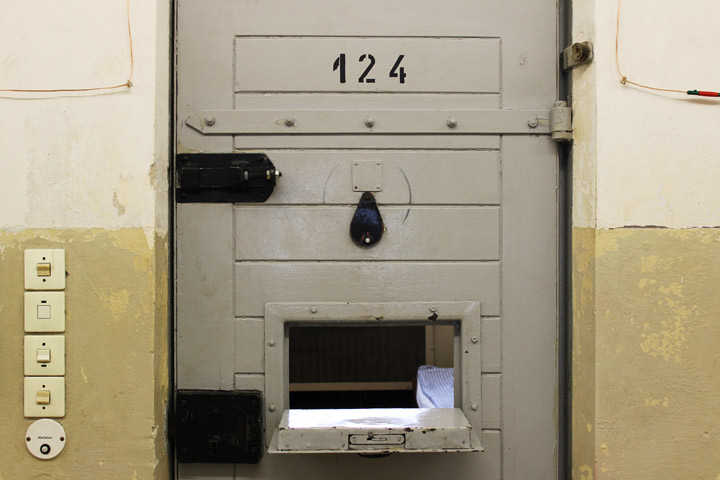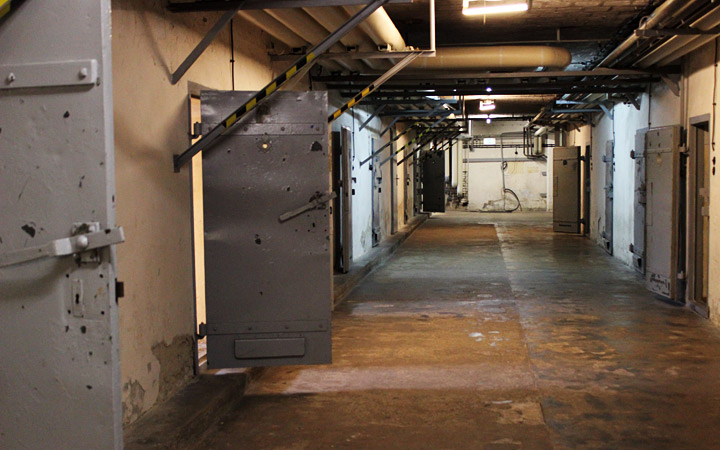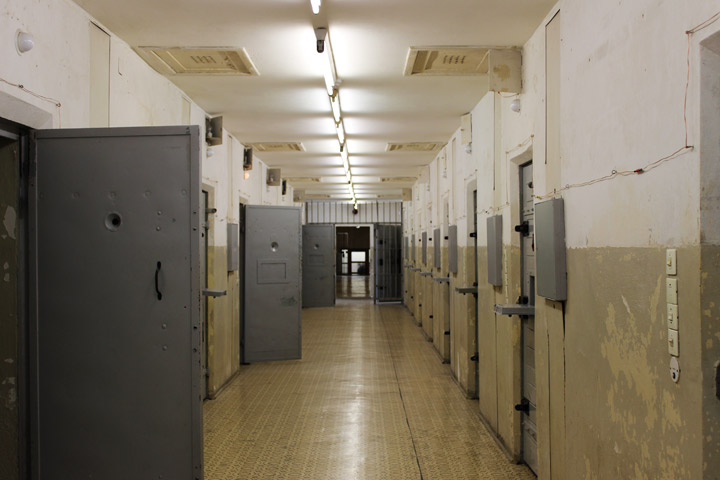The former Stasi prison stands in the middle of a residential neighbourhood in East Berlin. Surrounded by tall concrete apartment buildings and pretty houses, it’s hard to find if you’re not looking for it.

But thousands of people were once held at Hohenschönhausen Prison between the end of World War II and the fall of the Berlin Wall. It was run first by the Russians, then the East German Secret Police – the Stasi.
Now, it’s a cultural attraction, run by a foundation dedicated to uncovering its history. A guide meets groups of students and tourists and shows them around, explaining what occurred in this once-notorious prison.
The first building was originally constructed as a canteen. The occupying Soviet Army converted it to a detention centre in 1945 – somewhere to hold people temporarily before transferring them to other prisons, many of them former concentration camps.
The living conditions in the camp were terrible. According to the Berlin Hohenschönhausen Memorial Foundation, which currently administers the facility, at times as many as 4,200 people were held in the prison. Many were held for years without any legal recourse. Nearly 1,000 people died over six years.
Prisoners were forced to construct these cells in the cellar of the building. They were nicknamed the U-Boot (submarine). In the windowless concrete cells, prisoners shared a wooden bed and a lavatory bucket.
A lightbulb burned in each cell 24 hours a day. Inmates had little to do but walk in a tight circle on the concrete floor of their cells. Some former prisoners recall incidents of torture, such as extreme sleep deprivation and being kept in tiny cells which forced them to stand, all to extract confessions, according to the guide.
One dark, windowless cell was soundproofed and completely padded in thick black rubber. Prisoners were put there, ostensibly, to calm down.
The East German Ministry of State Security took over the prison in March 1951, imprisoning many opponents of the Communist regime there throughout that decade. At the end of the 1950s, prisoners from a nearby labour camp constructed a new prison building on the site.
At a glance, the new building is much nicer. It’s not all concrete, the floors are linoleum, the cells have windows and a toilet. But it was hardly a good place to be. Prisoners were kept in isolation from the moment of their arrest.
Some people were taken off the street, bundled into a van disguised as a delivery truck and driven to the prison without any idea where they were going. The van itself was divided into tiny cells so that prisoners never saw anyone else. They were transferred one by one into the prison. There were no communal meals or contact with other prisoners – they walked the halls, regulated by a traffic-light system designed so they’d never see anyone but guards and their interrogator.
At night prisoners had to sleep on their backs with their hands turned upward, visible on top of the blanket. This was ostensibly for their own safety and for suicide prevention, according to a guide at the Hohenschönhausen site.
During the day, they were not allowed to sit on the beds – only on their stools. The frosted glass bricks in the window prevented a clear view of the yard outside – all that’s visible is a blue and green blur. The toilet was right next to the door, under the constant eye of a guard.
The prison was designed to be terrible to experience but not so bad if you were lucky enough to get out and describe it to your friends, the guide said. Sleep deprivation and loneliness didn’t sound like much to people who had survived the Second World War, but people came out changed by the experience, he said.
Prisoners were often subjected to months of focused interrogation in a room like this on one of the upper floors. These offices have the only comfortable furniture prisoners were likely to see, and the only clear windows in the building.
The interrogator literally sat between a prisoner and the outside world.
But he wouldn’t pay attention to them for while. He would take calls, talk to colleagues while a prisoner sat and waited. Eventually, he might try to become their friend, ask the prisoner about their acquaintances, their activities. He might give favours such as a book, medical care or time in the yard. Sometimes, he might even grant them their freedom – often back to East Germany, where the Stasi still kept a close eye on the entire population.
The prison closed in 1990 after 44 years of operation. Now it is a memorial site, operated by former inmates and others who dedicate their time to restoration, historical research and educational work.
Click here for more information on the site and its memorial and research programs.
Leslie Young is doing a two-month Arthur F Burns fellowship based in Berlin, Germany. Follow her observations here.










Comments